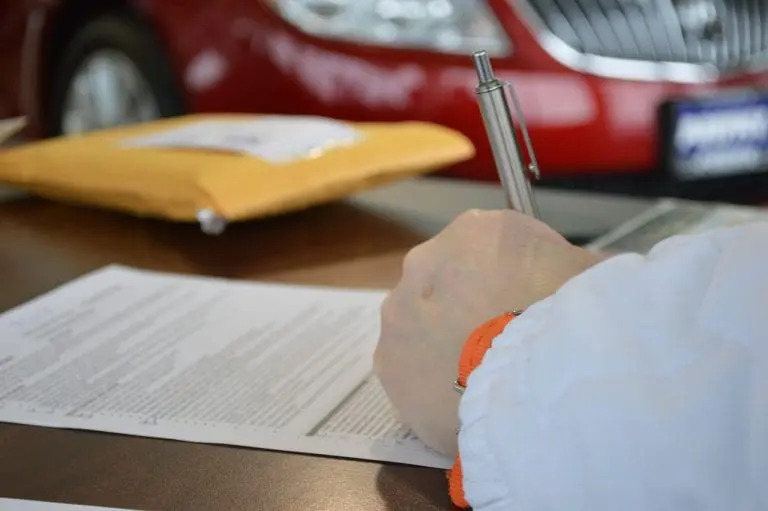Toxins in the Home: 4 Hidden Dangers Lurking in Your Home
Are there toxins in the home that’s making your family sick? Learn about the hidden dangers and how to test for things like mold, lead, and more.

Is your home making you sick? Many people today exhibit severe allergic reactions such as eye, nose, and throat irritation, skin issues, headaches, and more due to toxins in the home.
How do we solve this problem? Through environmental inspection. Because the environment in question is your home, the inspections, or tests, that we are talking about are performed on one’s home.
To ensure that your home is not making you sick, we are providing you with a list of tests that you should perform on your home so that it is toxin-free. If you are not sure how to find these tests, you can do a google search for them in the area where you live. For example, if you live in California, you can search for Mold Testing in California.
In this article, I am also going to be providing you with information on how to make the best use of these tests.
Get ready to have the safest house in the neighborhood!
Possible Toxins in the Home That You Should Be Aware Of
Did you know that the average age of an American home is 40 years old? Because of all the aging houses in this country, it should not be a surprise that many American homes are deteriorating.
Because of this deterioration, many American homes are developing toxins and spreading these toxins into the bodies of the homes’ residents. When in the human body, these toxins can cause everything from allergic reactions to neurological problems, cancer, and even death.
It is because of these negative health effects, that it is vital that you test your home for possible toxins. In case you do not know where to start, below is a list of toxins in the home that you should specifically test your home for.
Home Toxin #1: Mold
Mold is a fungus spore that naturally develops and floats in the air. Although not commonly seen, mold is one of, if not the most, common form of home toxins.
Things such as lingering moisture can cause mold to grow in nearly every crevice of a house. Some of the most common placeholders of house mold include inside and behind walls, ceilings, floors, and air ducts.
There are thousands of different types of mold in the world. Although many of these molds do not affect people, there are some molds that are so toxic that they can cause human long-term illnesses.
One of the most toxic forms of mold happens to be commonly found in homes. The name of this mold is Stachybotrys. Other names for Stachybotrys include black mold or toxic black mold.
If you smell mold or mildew in your home, are exhibiting random allergic reactions when in your home, or simply suspect that mold is growing in your home, contact Mold Busters for accurate mold inspections.
If the mold inspector finds mold, you can take the next steps to have it removed by using Mold Remediation Services. If the inspector does not find mold while looking at your house, you should purchase mold tests online to be sure.
Mold tests can help you find and test hidden mold in your home. Mold tests can also help you figure out what type of species of mold is in your home. The main forms of mold tests include air sampling tests, surface tests, and bulk tests.
Air sampling tests test the air quality in your home for mold spores. In surface mold tests, you take samples of household surfaces and test them for mold spores or growths. In bulk mold tests, you take pieces of material from your home and have them inspected for mold spores or particles under a microscope in a laboratory.
Home Toxin #2: Radon
Radon is a radioactive gas that forms when radioactive metals break down in soil, rocks, and groundwater. Radon is highly toxic and is the second leading cause of lung cancer after cigarettes. This is because breathing in radon gas causes radioactive particles to get stuck in your lungs.
One of the dangers of radon is that it is not noticeable when you first start inhaling it. Thus, you could be inhaling radon for years and not know it until you have lung cancer because of it. People who smoke on top of inhaling radon only increase their risk of developing lung cancer.
To test your home for radon, you need to purchase a radon testing kit online. Radon testing kits are inexpensive and easy to use. All you have to do is place the measuring device provided by the kit in a room of your home and leave it there for as long as the test kit says.
Short-term radon tests can take anywhere from a few days to 90 days to complete. Long-term radon tests take more than 90 days to complete.
Once you have left your radon measuring device in a room of your home for the designated time period stated by the kit, you must then send the kit with the measuring device to whatever laboratory or source is stated by your kit. Through the lab or source, you will be told if radon is detected in your home and, if so, how much.
For more accurate results, perform a long-term radon test. To reduce the levels of radon in your home, do not smoke, seal any cracks in the ceiling, floor, or other parts of the structure of your home, and make sure to have high levels of airflow in the home by using fans and vents. You can also reduce the radon levels in your home by building radon-resistant construction features into the structure of your home.
Home Toxin #3: Lead
Lead is a toxin that can be found anywhere from paint to your home’s water, to your home’s pipes, furniture, and more. Taking in lead can lead to health problems such as fatigue, kidney issues, muscle and joint pain, hearing loss, and mental issues.
To inspect your home for lead, purchase a lead test kit and/or hire a certified lead inspector. If you hire a lead inspector, tell him to inspect primarily the pipes and ground soil of your house.
Home Toxin #4: VOCs
VOCs, or volatile organic compounds, are bits of chemicals and toxins from objects in your home that escape into the air. Formaldehyde is one of the biggest VOCs out there.
To have your house inspected for VOCs, hire a home VOCs inspector or an industrial hygienist. You can also purchase your own VOCs home test kit online.
Home Toxin #5: Sewer Toxins
When a house’s sewer line is backed up, it can be a health hazard for the home’s residents. To avoid this problem, have a sewer line inspection done on your home. By having a sewer line inspection, you can stay on top of the conditions of your home’s sewer lines and avoid sewer toxins.
Home Toxin #6: PCBs
PCBs, or polychlorinated biphenyls, are toxic chemicals that were once used for everything from fluorescent lights, to paint, to the insulation and lining of electrical wires. PCBs are now known to increase the risk of cancer. PCBs also negatively affect the health of people’s nervous system, endocrine system, reproductive system, and immune system.
To inspect your home for PCBs, have an electrician check the wiring of your house. You can also inspect for PCBs by having your air quality checked.
Home Toxin #7: Asbestos
Asbestos is a toxic chemical people used in the development of all aspects of a house before the 1980s. When asbestos particles break down, they can pose a threat to humans health. Before buying or renovating a home today, make sure to have it inspected for asbestos.
Normally Non-Toxic Things That You Should Have Periodically Inspected
Because toxins in the home tend to develop in moisture and spread to the air, it is important to test your home’s water and air quality every now and then for toxins. This is especially true because of the fact that we breathe in the air every second of every day and drink water every day for survival.
To learn more things about how to take care of, or even decorate, your home and save money while doing it, contact me here.









